After our marvellous encounter with the dromedaries at the reservoir near Ouarzazate(link to article), we continue on the “Route of the Kasbahs”. There are three valleys ahead of us, always branching off to the left of the road into the same mountain world of the Atlas Mountains. This is “Berberland”, as the symbols and lettering repeatedly make clear. And at least between Ouarzazate and the Dades Valley there seems to be a kind of self-regulation. There are no more policemen at every roundabout and the people we meet remain as friendly, polite and pleasantly distant as we last experienced.
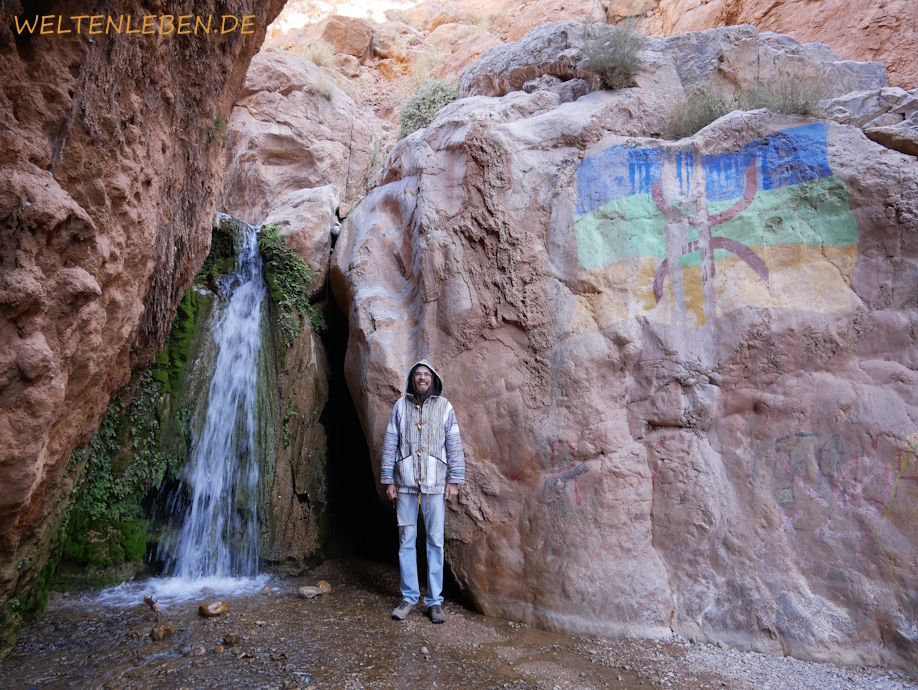
Beautiful waterfall, Weltenleben-Chris and the Berber sign 😉
The first valley is the “Valley of Roses”. We have our first really pleasant shopping experience in Morocco in the town before it, Skoura. It’s a place where we hardly see any tourists and instead immerse ourselves in many small local shops. Fruit and vegetable shops, a bakery and a small shop selling all kinds of unpackaged goods – from sultanas (unfortunately from Iraq or Egypt – crazy world!) to tooth cleaning packets made from walnut bark, home-ground coffee spices and kilos of lavender flowers. Ghassoul, lava clay, is also available here. It originated here in Morocco and we have always used it to wash our hair and bodies when travelling and showering outdoors. Made entirely naturally from a type of clay, it is completely biodegradable and even washing it off in the river does not have a negative impact on the natural balance. The young salesman is happily impressed that we know about this product and we buy two packets at a very favourable price.
There are also products with roses on them, but all in plastic bottles and with a “Chinese touch”. And with the overly favourable price of the equivalent of one euro, even here in Morocco it can’t be true that pure natural rose water is actually sold in these bottles…
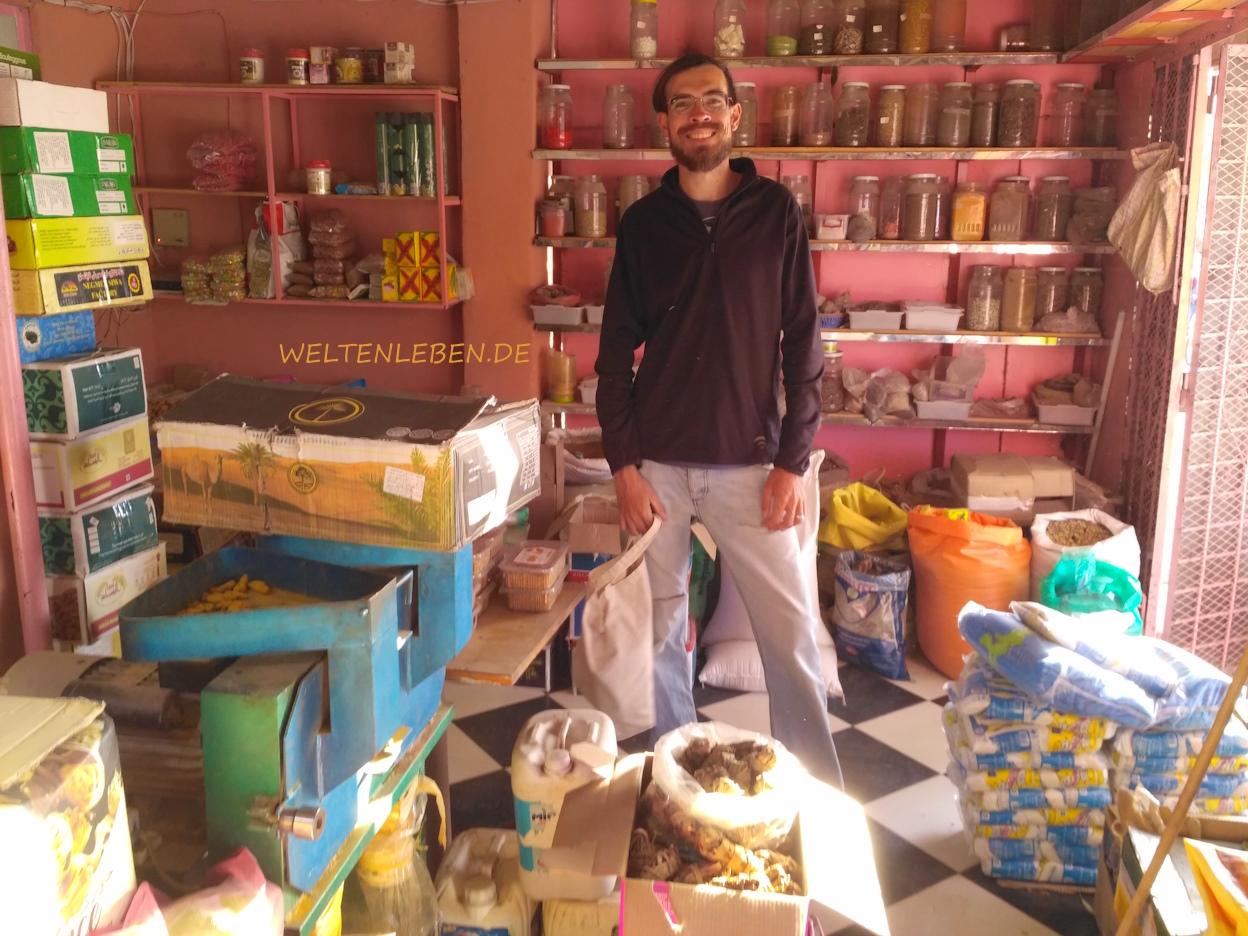
Unpackaged shop in Moroccan! A great shopping experience
After this wonderful experience, we continue our journey in high spirits and take a walk to visit two half-ruined kasbahs before finding the third really beautiful campsite in this country. Next to a river in the Valley of Roses, at an altitude of 1500 metres. It is early February. At night, the temperatures drop to -3 degrees outside and we wake up to the usual winter temperatures of 4 degrees inside our living room.
The sun invites us out for a walk and we are surprised to see oleander bushes even at these altitudes!
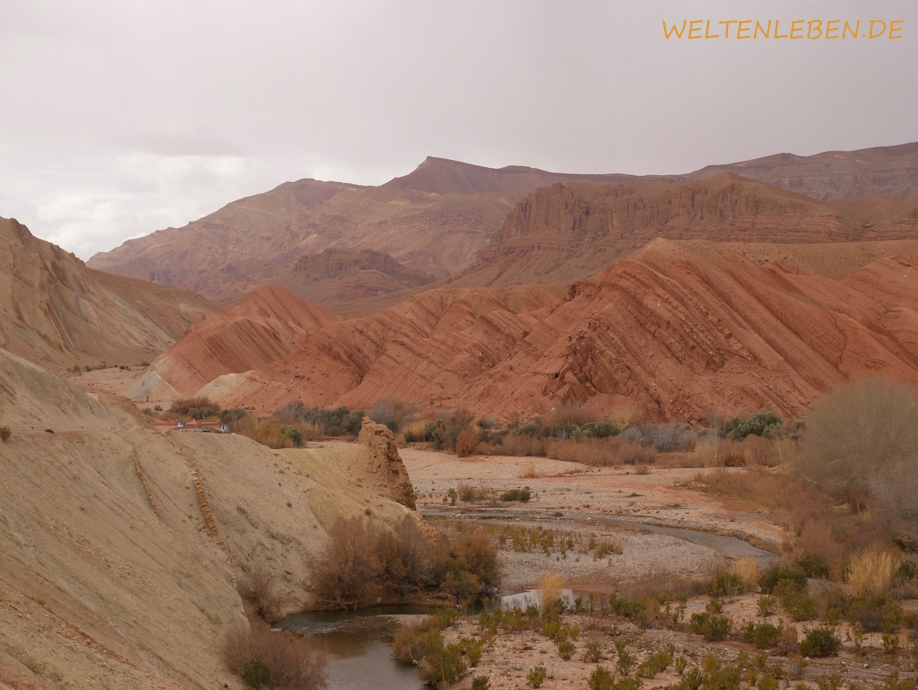
View of the “Valley of Roses”
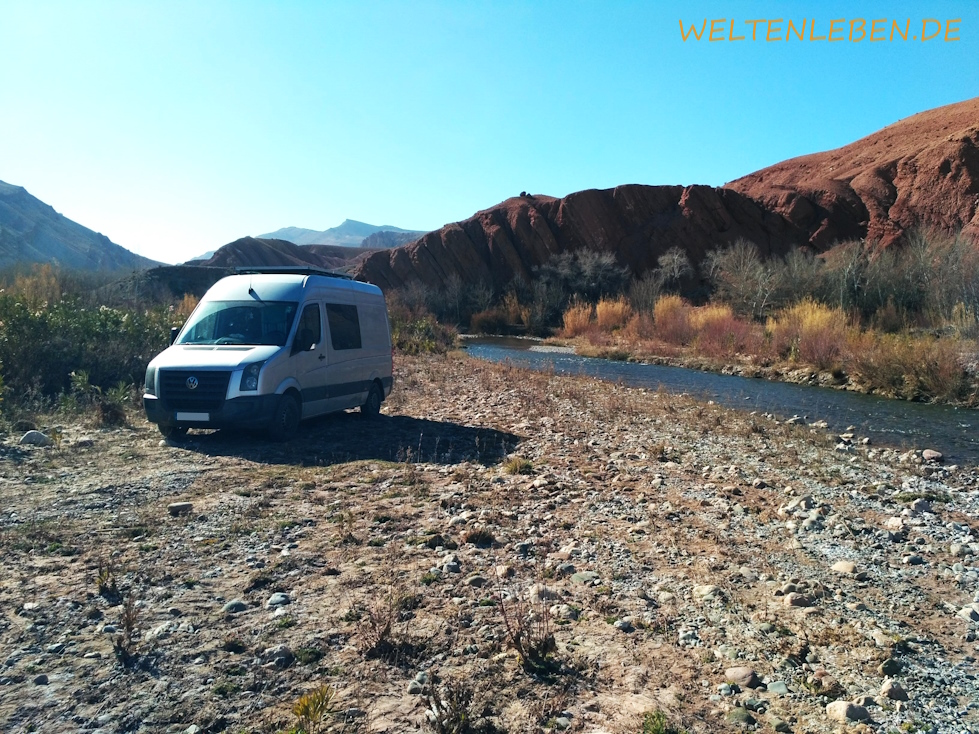
River campsite in the “Valley of Roses”, with sub-zero temperatures at night
As dark clouds gather, we drive out of this beautiful valley and explore the next one, which is considered one of Morocco’s top highlights: the Dades Valley and the Dades Gorge.
It begins as the usual green oasis world here – palm groves and small fields lie next to a small river bed, behind which the dry, barren rocky hills rise. At some point, the rocky slopes narrow to the right and left and for a few metres we can drive into the Dades Gorge before the road climbs up again and the gorge is barely visible from above. The journey continues and we begin to wonder where the highlight is How far is it worth travelling into the mountains? The internet doesn’t help us much; the winding road after the narrow section is described as a “pass with spectacular hairpin bends”. A somewhat exaggerated description in our eyes.
While we are still researching, an Allgäu camper pulls up next to us. The driver tells us about his recent and similarly disturbing experience with a horde of children, as we have already experienced. “They even tried to rip open my car door! I don’t know if you can lock your sliding door from the inside?” – We nod, we can. And this country is actually the first one where we consciously do this while driving… The man has even taped his driver’s door so that it can’t be opened from the outside. “But otherwise it’s still nice, just like here, if you keep driving.” We say thank you and decide to avoid another experience like this by turning round and driving back.
Once again with our eyes wide open and a few photo stops. And yes, all in all it is definitely a nice detour into the Dades Valley.
Some of the impressions for you can be found in the following gallery:

We continue our favourite Moroccan tradition of enjoying freshly baked pastries with our coffee further down the valley and then go for another walk to explore two empty kasbahs.
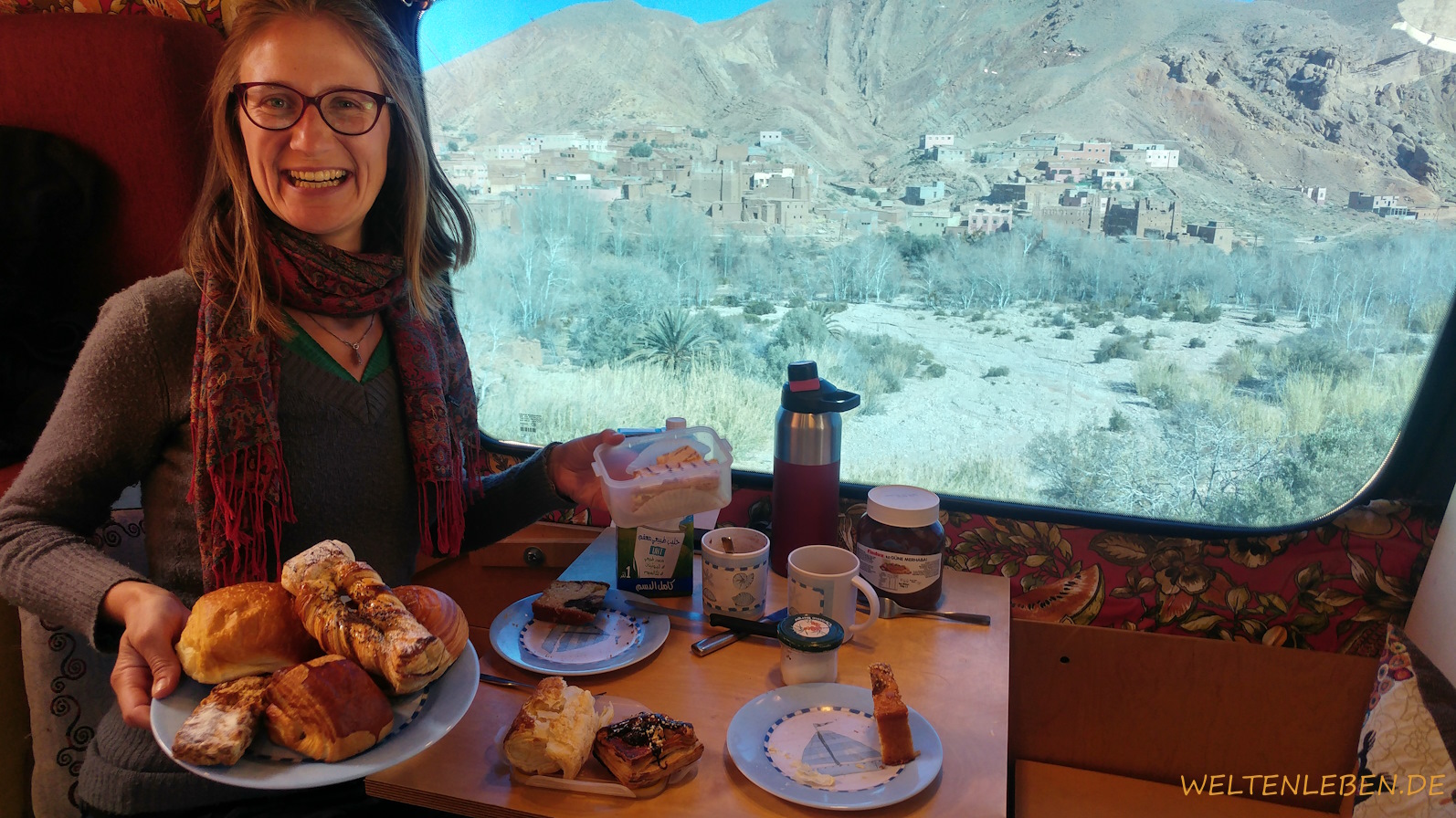
Richly laid coffee table with a view of two kasbahs and a village in the Dada Valley
We find a place to sleep in the car park of a small Berber restaurant, where we eat a simple vegetarian tajine by firelight. The next morning, we thaw out in the sun on the terrace while we enjoy what feels like the national breakfast: Omelette, bread, mint tea and fresh fruit juice.
We take a walk to the so-called “monkey rocks” opposite, which have exciting and unusual rock formations.
Click to open the gallery:
Just as we are about to start feeling really comfortable and almost regret having only just arrived in this part of the country and having spent so long dealing with Morocco’s unattractive sides, the tide gradually turns again.
On our walk here in the middle of nowhere, two little boys of kindergarten age ask us for money, which puts a slight dampener on our mood. How is it that people so young are so polarised? Who likes to feel like a cash machine?
And we definitely have to take a deep breath again when we can’t even pull over in a place with lots of beautiful kasbahs on the way to the next gorge, the Todra Gorge, without hordes of screaming boys storming towards us again, we meet an unpleasant, pushy man fetching water, and then find the entire stone desert on the right along the road littered with plastic waste, which even has its own Google marker here: “Ocean of Plastic.”
After an eventful few hours, it is already late afternoon when we arrive in the Todra Gorge. But as it turns out, this is probably the best time to visit! Most of the tour buses, which are usually in abundance here, have already left and we can even walk through the gorge on our own at times. Unlike the Dadestal, which is mostly wide open, the Todra Gorge is narrow and only 10 metres wide in places, while rock faces tower up to 300 metres high to the right and left. Really impressive! On the way back, we are able to observe a special highlight: An animal climber with a fawn moves light-footedly along the rock face above us!
Come back with us to this moment in the following gallery:
We spend the night in another section of the stone desert. Because there is a lot of it in Morocco. Sandy deserts, on the other hand, can only be found in two very small areas of the country, despite all the advertising images of dromedaries and dunes that you come across so often. And since it is supposed to be very touristy there and the tranquillity of the desert is probably disturbed by a number of noisy quadbike tours and the like, we decide against this detour.
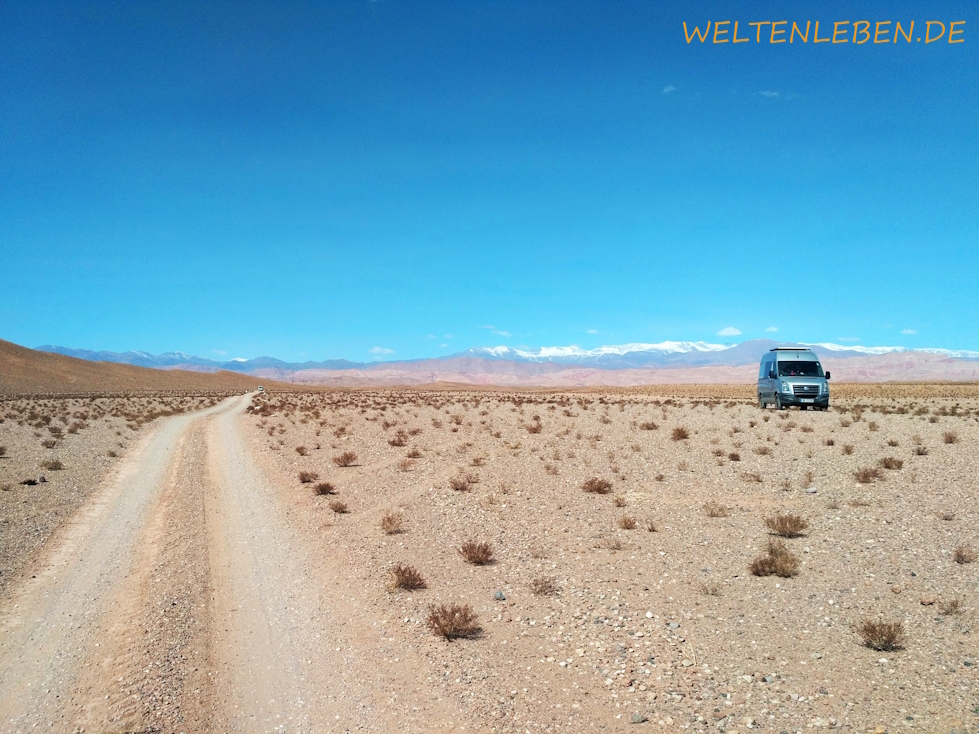
Stony desert as far as the eye can see with views as far as the snow-capped peaks of the Atlas Mountains.
Instead, we hope to find peace and quiet in the mountains, through which we will drive to head north again.
But luck is not on our side: despite our carefully selected parking space, which is not visible from the road, and our darkened windows, through which no light can penetrate, blue lights suddenly approach us at midnight. The workers on the nearby building site must have told the authorities that we were here. The inevitable happens; something we have experienced several times before in Morocco and which thoroughly spoils our free time and travelling as we love it: The police say it’s “dangerous” here and want to take us to a campsite 20 kilometres in the opposite direction. What is “dangerous” here, we want to know. No reason is given, just the word repeated. Miraculously, however, Chris’s vehement insistence during the following 20-minute discussion that we want to spend the night here helps, and we are finally allowed to go to sleep and remain undisturbed for the next few hours.
Of course, our peace and quiet for the next day is gone and we set off again in the morning. Which was also the deal with the officials! And the next stopover also becomes an emotional challenge, as some school-age boys spot us and soon follow up with provocative gestures and shouts.
Remember: never stand within sight of a village or even a school in Morocco! Not even if the village is at least 2 kilometres away from you. And not even with a “camouflage mobile” like our Silvio. And even if you don’t think there’s a village there, the locals will find you and unfortunately this is usually not a pleasant encounter. Which always makes us sad, because we’ve made great contacts in so many other countries as a result.
After these experiences, we need to clear our heads before we can appreciate the unique beauty and special character of the area again.
You can see a few impressions in this gallery:
We already know from our early days here that things are definitely not going to get any better in the north of Morocco.
But we still want to make two stops on the way to the ferry: first, we head to the only forest with monkeys in Morocco, near the town of Azrou. Until recently there was even thick snow here!
The monkeys are so used to people that they sometimes even eat out of their hands. People also leave their tracks here again and simply leave all the picnic plastic rubbish behind. We prefer to observe the monkeys in their natural environment and set off on foot. In fact, we eventually find a few of them, who eye us and especially our dog critically from the trees while we take a break among them.
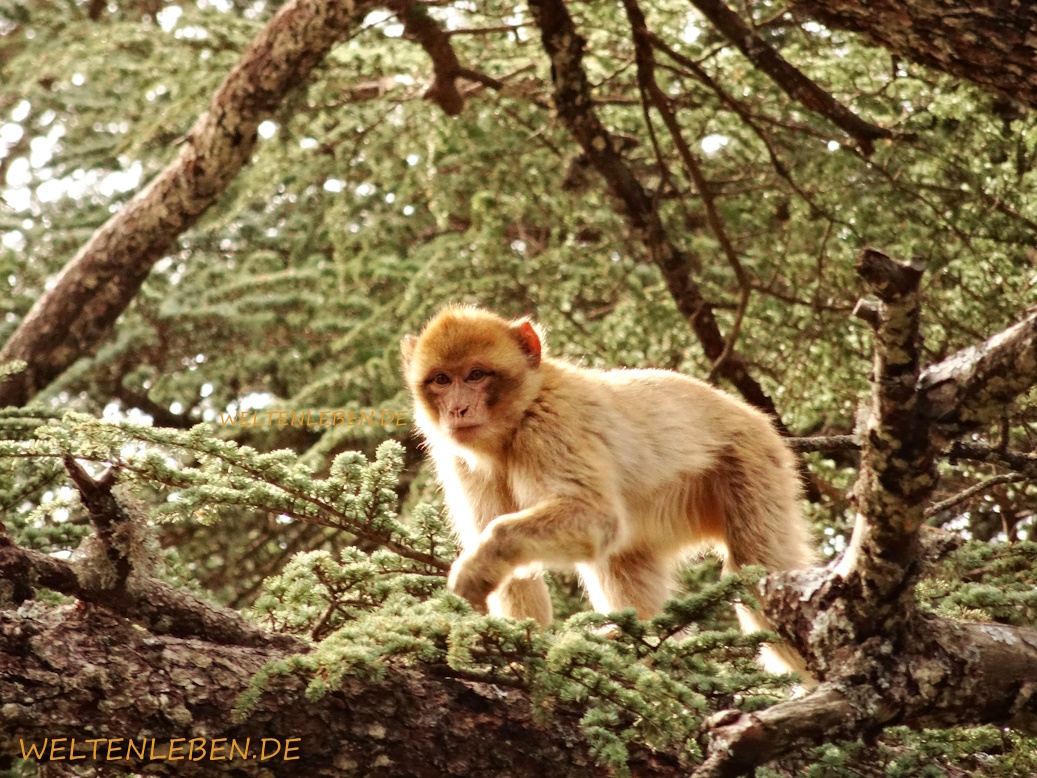
A climbing Barbary macaque
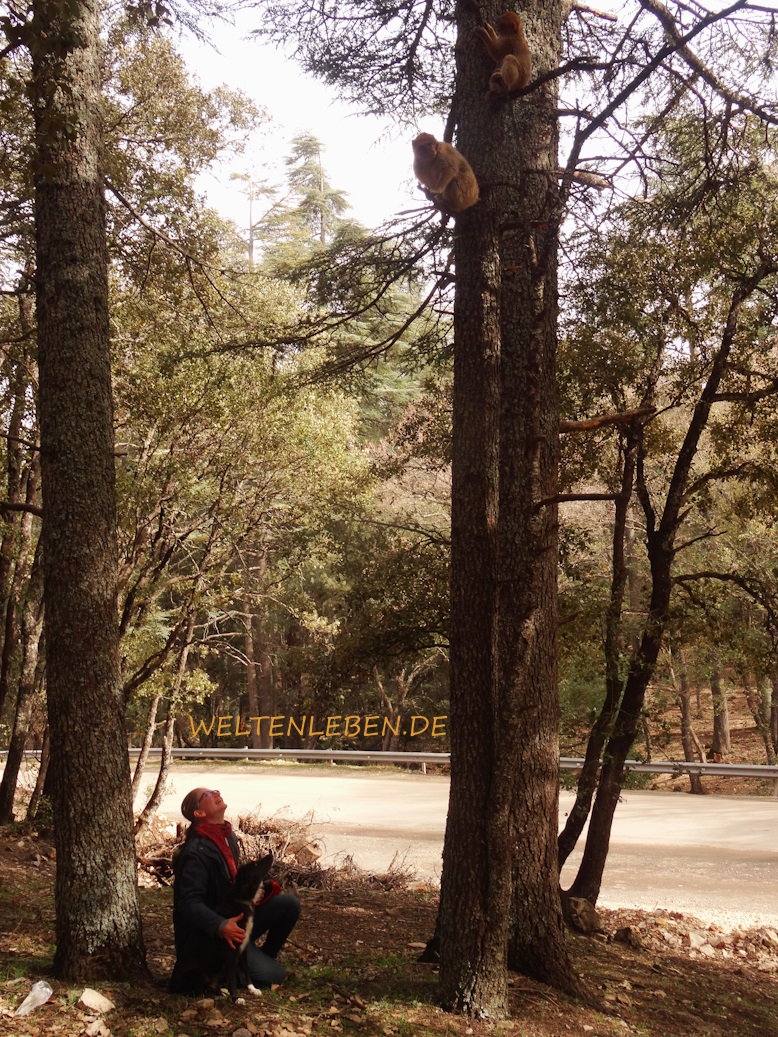
Curious exchange of glances from human to monkey.
Now it’s on to the last stop: the city of Fès, the oldest of the country’s four royal cities. Our travel guide praises it as the “most beautiful Arab city”. And really, after two days there, we can say that this is the most beautiful Moroccan city for us! Marrakech may have more grandiose and stylish shopping, but Fez is even more beautiful to look at. The old town is even a UNESCO World Heritage Site and is said to be the largest medieval old town in the world. We stroll through the alleyways and indulge in culinary delights from time to time with filled caramel cream puffs and delicious vegetarian balls in a sandwich.
As in Marrakech, there is also a medersa here, a former Koranic school. Unfortunately, only a small part of it can be visited, but it is still very impressive and beautifully intricate.
We also want to catch a glimpse of the tanners’ quarter. Unfortunately, this is not possible on our own, but we can still avoid a sales tour. From above, we can take a look at the basins in which animal skin is transformed into colourful leather in different sheets. All the animals, from camels to sheep, are slaughtered halal, our guide tells us proudly. :-/
And as we walk back towards the car park in the evening, we are accompanied by a farewell greeting that was probably meant more as a lure: “Get high before you die!”
Come with us to Fès in this gallery:
Now it’s time for us to leave Morocco, in more ways than one. We have been here for almost 3 months. After all, in addition to some wonderful hours, days and experiences, we were also granted two whole weeks of travelling in one go before the clash between this strange culture and our own culture and way of life caught up with us again and again and demanded a lot of our strength and energy.
Now we are a lot richer in experience!
And Morocco just can’t let it go and bids us farewell with a very unpleasant border crossing. Outside Ceuta, the Spanish enclave from where we want to take the ferry to the European mainland, our car is checked by very unfriendly Moroccan officials. It’s raining, the drug-sniffing dog’s paws are wet and dirty – and they not only send him into the car, which has never happened to us before, but also up onto our bed, which even has crockery on it. Not to forget, dogs in this country are considered unclean creatures by nature and are treated accordingly.
When we protest, the man shouts at us “You are in Morocco! So you have to speak Arabic!” We forget that French is also commonly spoken here. And we are told to take the mattress and our bedding outside. Into the rain. We refuse and this time, too, it finally has the desired effect. The official hands us the blanket that he ripped off our seats and leaves us his boot and dog paw prints on a pillowcase as a farewell.
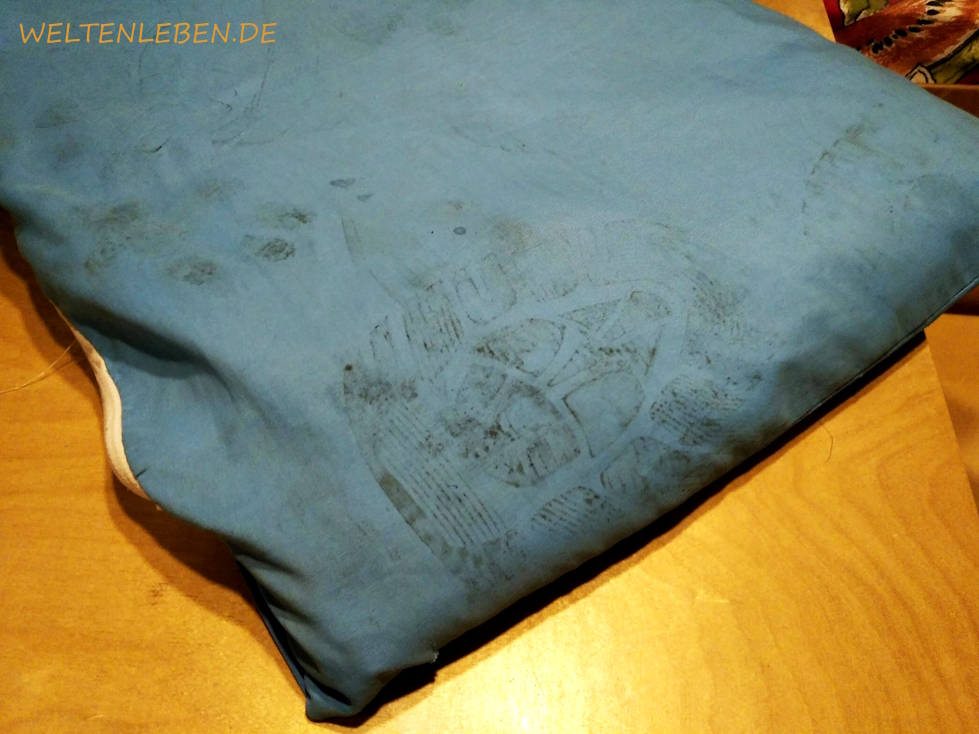
Farewell 🙁
We are allowed to pass.
Goodbye, Morocco – hello EU!
Moving travel greetings from
Sophia and Chris







































